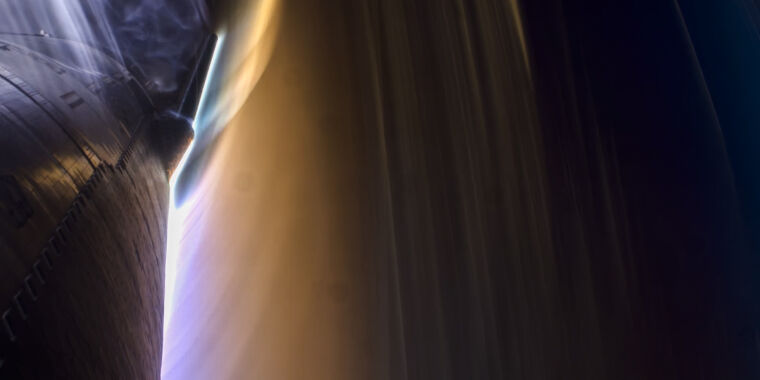On Thursday, SpaceX successfully conducted the fourth test flight of its massive 400-foot (121-meter) tall Starship rocket from its Starbase facility near Brownsville, Texas. For the first time, both stages of the rocket – the Super Heavy booster and the Starship upper stage – not only launched successfully but also achieved controlled splashdowns at sea. This is seen as a step closer to realizing the vision of reusing the booster and upper stage repeatedly. Starship is set to play a role in NASA's Artemis program, transporting astronauts to and from the lunar surface. During this test flight, 2 out of the 33 methane-fueled engines on the booster failed, but the remaining engines guided the booster to a relatively gentle splashdown in the Gulf of Mexico. The Starship upper stage reached a peak altitude of 132 miles (213 km) before reentering the atmosphere, successfully controlling its orientation while descending over the Indian Ocean. Finally, 3 of the upper stage's engines reignited, and it achieved a soft landing in the Indian Ocean after assuming a vertical position.
스페이스X의 스타십이 우주에서 첫 귀환을 성공적으로 마치며 상당한 손상을 입었지만, 무사히 돌아왔다. 스페이스X는 지난 6일 텍사스주 브라운즈빌 근처 스타베이스 시설에서 121 미터 높이의 초대형 로켓 스타쉽의 4차 시험비행을 성공적으로 진행했다. 이번 시험에서는 처음으로 로켓의 두 단계, 즉 슈퍼헤비(Super Heavy) 부스터와 스타쉽 상단부가 모두 성공적으로 발사되었을 뿐만 아니라 해상에 제어된 상태로 착륙하는 데 성공했다. 이는 향후 부스터와 상단부를 반복 사용하기 위한 비전을 실현하는 데 한 걸음 다가선 것으로 평가된다. 스타쉽은 NASA의 아르테미스 프로그램에서 우주인을 달 표면으로 운송하는 역할을 맡게 될 예정이다. 이번 시험비행에서는 부스터의 33개 메탄연료 엔진 중 2개가 실패했지만, 나머지 엔진들이 부스터를 멕시코만에 비교적 부드럽게 착륙시켰다. 스타쉽 상단부는 정점 고도 132마일(213km)에 도달한 후 대기권으로 재진입하여 인도양 상공에서 성공적으로 방향을 제어하며 하강했다. 최종적으로 상단부의 엔진 3개가 재점화되어 수직 자세를 취한 후 인도양에 소프트랜딩했다.

